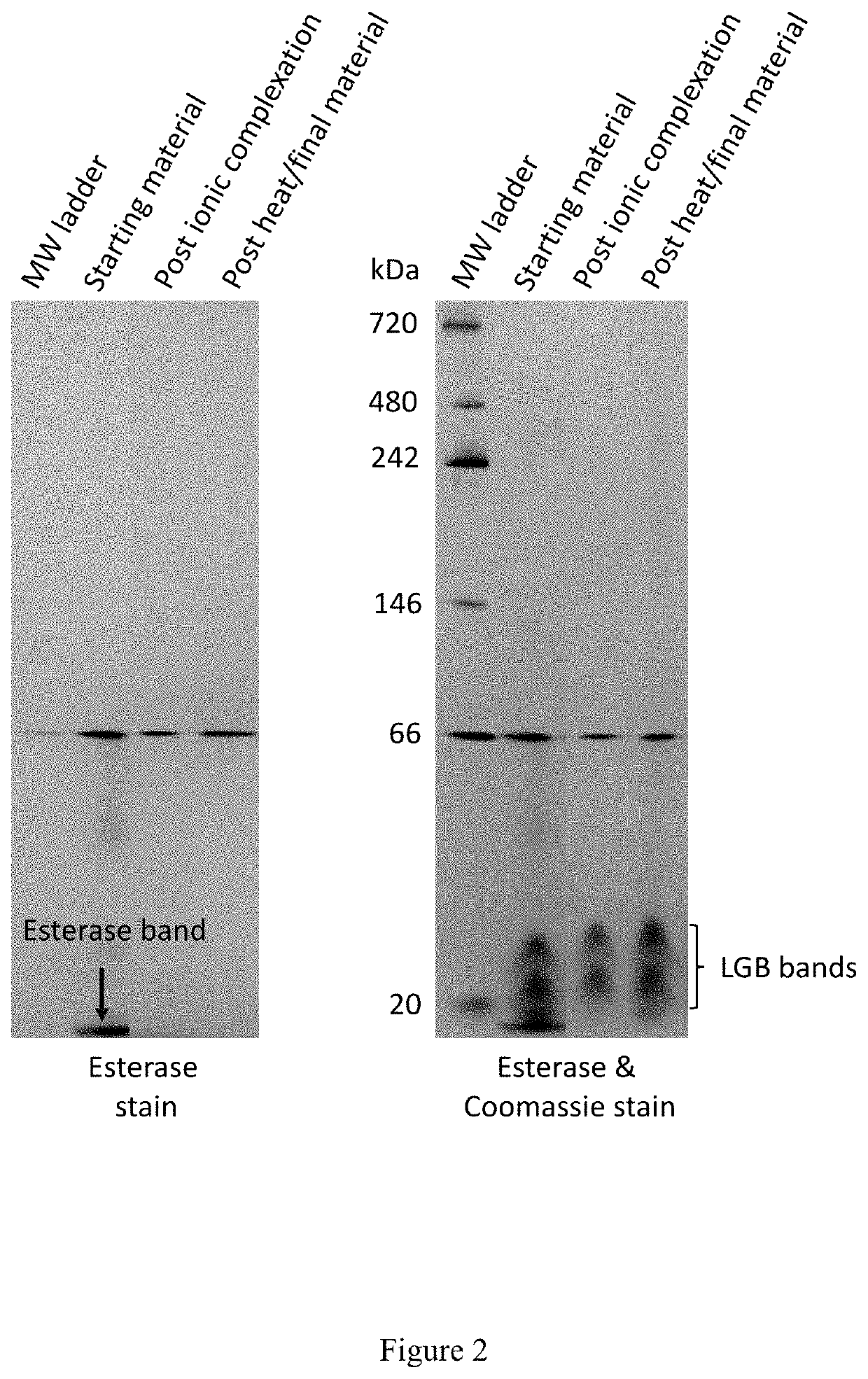Recombinant components and compositions for use in food products
a technology of recombinant components and food products, applied in the field of alternative to animal-derived food products, can solve the problems of unhealthy reactions in humans, potential contamination, and new problems of recombinant components in food products
- Summary
- Abstract
- Description
- Claims
- Application Information
AI Technical Summary
Benefits of technology
Problems solved by technology
Method used
Image
Examples
example 1
f Esterase Activity Via Purification
[0250]A recombinant Trichoderma reesei host cell capable of producing a recombinant β-lactoglobulin was generated by transforming protoplasts of a Trichoderma reesei strain with a polynucleotide targeted for genomic integration and encoding β-lactoglobulin under the control of an inducible promoter. Transformants were selected on a medium that comprised a marker that selected for integration of the recombinant polynucleotide.
[0251]The recombinant host cell was fermented in a culture medium suitable for growth of the recombinant host cell and for production and secretion of the recombinant β-lactoglobulin.
[0252]The fermentation broth was collected, and biomass and cell debris were removed by centrifugation to obtained a clarified fermentation broth. The recombinant β-lactoglobulin was isolated from the clarified fermentation broth based on charge (i.e., ionic complexation), thermolability / thermostability, and / or hydrophobicity.
[0253]For example, th...
example 2
f Esterase Activity Via Culturing
[0257]A recombinant Trichoderma reesei host cell capable of producing a recombinant β-lactoglobulin was generated by transforming protoplasts of a Trichoderma reesei strain with a polynucleotide targeted for genomic integration and encoding a β-lactoglobulin under the control of an inducible promoter. Transformants were selected on a medium that comprised a marker that selected for integration of the recombinant polynucleotide.
[0258]The recombinant host cell was fermented in three cultures that comprised a culture medium that was suitable for growth of the recombinant host cell and for production and secretion of the recombinant β-lactoglobulin. The three cultures differed from each other only in the type of anti-foam agent comprised in the culture medium, which was selected from the list consisting of Industrol DF204, Polyglycol P-2000, and Erol DF6000K.
[0259]Fermentation broths were collected from each of the cultures, and biomass and cell debris w...
example 3
f Esterase Activity Via Genetic Modification
[0261]A recombinant Trichoderma reesei host cell capable of producing a recombinant β-lactoglobulin and comprising an essentially eliminated cutinase (e.g., cutI (UniProt #G0RH85)) activity (“cutinase knockout recombinant host cell”) was generated by transforming protoplasts of a Trichoderma reesei strain capable of producing a recombinant β-lactoglobulin (“corresponding recombinant host cell”) with a polynucleotide (targeting vector) engineered to integrate by homologous recombination at the cutinase gene locus and to replace the cutinase open reading frame with a selection marker.
[0262]The general structure of the targeting vector is shown in FIG. 6. The targeting vector comprised a selective marker (pyr4 gene, which enables growth without uracil supplementation) flanked by polynucleotide sequences that are homologous to the upstream and downstream polynucleotide sequences flanking the cutinase open reading frame in the Trichoderma reese...
PUM
| Property | Measurement | Unit |
|---|---|---|
| temperature | aaaaa | aaaaa |
| temperature | aaaaa | aaaaa |
| weight ratio | aaaaa | aaaaa |
Abstract
Description
Claims
Application Information
 Login to View More
Login to View More - R&D
- Intellectual Property
- Life Sciences
- Materials
- Tech Scout
- Unparalleled Data Quality
- Higher Quality Content
- 60% Fewer Hallucinations
Browse by: Latest US Patents, China's latest patents, Technical Efficacy Thesaurus, Application Domain, Technology Topic, Popular Technical Reports.
© 2025 PatSnap. All rights reserved.Legal|Privacy policy|Modern Slavery Act Transparency Statement|Sitemap|About US| Contact US: help@patsnap.com



